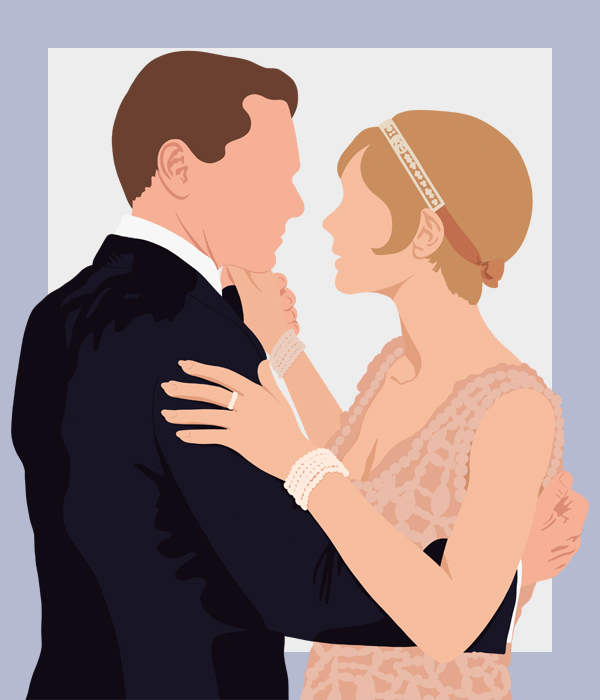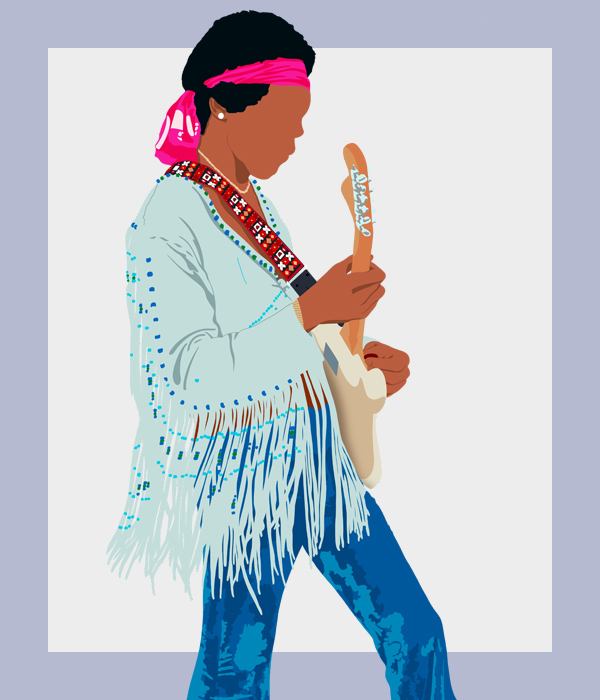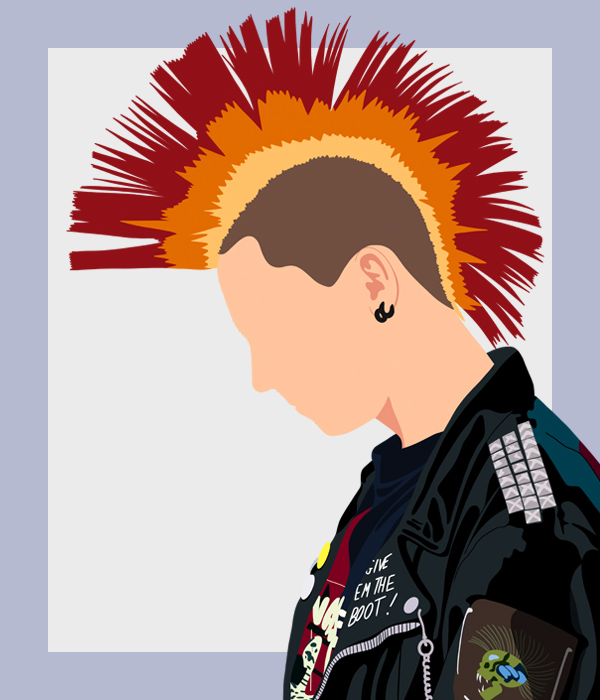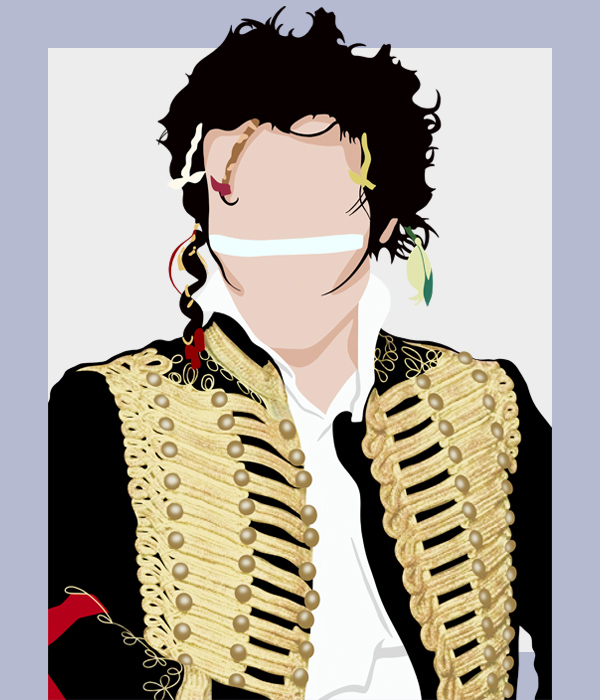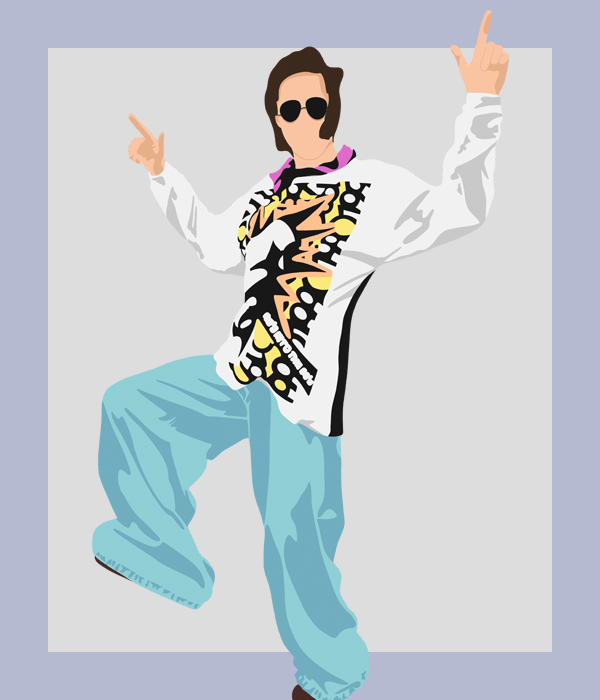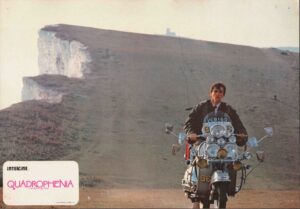Since the early 20th century, music and fashion have worked hand in hand.
Music brings fashion to the masses and is influential in creating subcultures that allow the wearer to express themselves creatively and share their individuality. It also helps create a sense of belonging with others that share the same music and fashion tastes.
Music and fashion have been intrinsically linked throughout the decades, resulting in global fashion trends.
In this blog, we’re taking a closer look at how music and fashion are related and how trends have changed over the last 100 years yet still inspire and influence modern-day dressing.
Table of contents:
How has music influenced fashion over the years?
Bobby Soxers and Teen Pop fashion
Music and fashion in the 1960s
Baggy, Rave, Grunge & Hip-Hop of the 90s
How are music and fashion related?
How has music influenced fashion over the years?
Over the last 100 years, music and fashion have always been connected. Whether a trend is adopted by a singer and shared with the masses or a performer’s style catapults a trend to their adoring fans, the intrinsic connection between them cannot be denied.
Together, music and fashion have been responsible for some of the most iconic looks and subcultures created over the last century. Here are some of the most widely recognised and how they originated.
Flapper fashion of the roaring ’20s
Jazz music may appear innocent on the surface, but in the 1920s, it was regarded as scandalous.
The first form of music played exclusively at speakeasies and nightclubs, the music spoke to all genders and races and was quickly embraced by the youth of the time.
Flapper fashion was embraced by women, helping them break away from social norms. The fashion was loose and free-flowing in contrast to the restrictive women’s clothing before, offering the freedom of movement to dance.
For men of the time, it was all about suiting. Men fully embraced tailoring, and a well-tailored suit, paired with a Fedora hat, bow tie, silk shirt and black patent shoes, was the quintessential 1920s look.
Flapper style was the first example of music influencing how people dressed. However, fashion houses didn’t catch on and continued to design for adults rather than coming of age teens. By the early 1950s, this was all about to change.
Bobby-Soxers and Teen Pop
In the late 1940s, young teen girls obsessed with crooners of the time, such as Frank Sinatra, became known as the Bobby-Soxers.
Characterised by their ankle socks, poodle skirts, rolled-up denim jeans, frilly blouses, sloppy sweaters and saddle shoes, these teens represented the first real marrying of music and fashion.
However, in the 1950s, the relationship between fashion and music changed dramatically. With the increased accessibility of television and the growth in film’s popularity, teens and young adults could dress like their film heroes and rock ‘n’ roll idols, such as Elvis Presley.
The 1950s saw the birth of the teen fashion industry when teens craved the clothes that would help them resemble their idols. Fashion started to shift towards the youth and trends for the first time, changing the face of fashion forever.
Music and fashion in the 1960s
Mod fashion
In the 1960s, London was the place to be for fashion and all that was considered cool.
Swinging sixties style started with the Mods, who embraced a modern version of jazz alongside ska, R’ n’ B and soul music.
Mod uniform represented a sense of belonging, and they were the first real generation to accept and embrace immigration and a new look in Britain. The men wore Italian tailoring, polo shirts and penny loafers. They finished their look with a fishtail parker to protect their suits when riding around the city on their Italian Vespa scooters. The women favoured Mary Quant for their wardrobes.
Mod style was deeply rooted in fashion and music, and because of its popularity, Mod is widely regarded as one of the biggest trends in fashion history.
Still a joyful inspiration for designers today, Mod had a resurgence in the eighties and influenced Punk in the 1970s and Britpop in the 1990s.
Read more about the mod aesthetic in our blog on dressing like a Mod.
Hippie fashion
Across the pond in the USA, fashion and music took a very different direction.
As many young American men were being called up to fight in the Vietnam war, Hippie fashion and music were a peaceful reaction to these times.
The folk music that was the soundtrack to this trend featured lyrics which discussed war and promoted an alternative, more peaceful and harmonious way of living.
Hippie style was cheap and available, with most of the clothing worn coming from used clothing bins, army and navy stores, or being completely handmade.
The music was fuelled by psychedelic drugs, which increased in popularity during the sixties, causing both the music and fashion to become trippy. This was characterised by bright floral colours, tie-dye styles and fringing, paired with bell-bottom jeans.
70s music and fashion: Punks and Glam Rock
Back in the UK, an uprising was emerging.
Inspired by the Mod movement and a shared love of SKA, Reggae and Soul, Punk developed into aggressive rock music with some very light SKA influences.
Punk was a social movement, and the music reflected that. Focusing on freedom and individuality, it was anti-establishment. Its angry, controversial lyrics stuck a middle finger up to the Government and were a rebellion against life in the UK.
Expression through fashion and music, Punk wasn’t only a genre; it was a way of life represented by standing out and looking different.
Although there were many punk bands around at the time, it was the Sex Pistols that became the face of the movement. Managed by Malcolm McLaren and styled by his partner, Vivienne Westwood, the pair became the faces of the subculture, dressing punks from their store ‘Sex’ (then later ‘Seditionaries’) on King’s Road, Chelsea.
Shocking and intimidating style, punk fashion was characterised by fetish clothes, safety pins, Nazi Swastikas, and simulated bloodstains. Heavy makeup, Dr Martens boots and colourful hair completed this bold, visual statement.
Although short-lived, Punk will remain the first real music subculture, showing how powerful the connection between music and fashion can be.
Glam Rock
The 1970s was also the first decade that saw special effects come to prominence. The Star Wars film franchise sparked an interest in the world of science fiction, and this was soon reflected in the pop culture of the time.
The interest in better performance effects and visuals saw artists such as David Bowie and Marc Bolan ramp up their showmanship. Drawing inspiration from science fiction, they added space-age backstories to their on-stage characters.
The fashion they wore to portray these characters acted as a visual storytelling of their music. Fans copied the style by dressing in accessible clothing such as high-waisted pants, platform shoes and brightly coloured shirts.
As the look was more costume than every day, the fashion didn’t catch on, although the music was popular.
80s music and fashion
New Romantics
Although Glam Rock wasn’t relatable in terms of fashion, it did, however, inspire a new generation of musical artists, otherwise known as the New Romantics.
In the late 1970s, when Punk became more conformist, many of the early punks were searching for a new identity. Inspired by David Bowie’s Glam Rock Ziggy Stardust days, they would assemble at Billy’s, which hosted Ziggy Stardust nights for Bowie fans.
This venue would later become the Blitz nightclub and the home of the New Romantic movement. A fashion obsessed youth culture motivated by class conflict, they were poseurs who shunned the limited styling choices offered by Punk. The look was inspired by romantic themes, full of glamour with a nod to dandies, period costumes and Charles III.
It was the beginning of pop stars and boyband culture, with Duran Duran and Spandau Ballet driving the scene with fans assigning themselves to one camp. Thanks to MTV, the 80s also saw the rise of the music video. For the first time, the look of an artist was just as important as the music.
Goth
The 80s was a transition period for music and fashion. Another less peppy spin-off from Glam Rock was the Goth movement.
Incorporating both Glam Rock and Death Rock – rock music incorporating both horror and gothic elements – Goths wore black clothing, pale makeup and dark lipstick and appreciated horror and the darker side of life.
Their fashion inspiration was taken from Tim Burton characters and was witch-like, with bands like The Cure, Bauhaus and Siouxsie And The Banshees factoring high-up on their musical hit lists.
Baggy, Rave and Grunge of the 90s
Baggy, Rave and Britpop
The 90s saw music and fashion take on many identities.
Towards the end of the 80s, with the popularity of the Madchester scene, the Haçienda club and the growing desire for music that you could dance to, rave culture started to emerge.
A combination of techno music, electro, house and Balearic beats, it was music that you could move to, and the fashion reflected that.
Acid house was huge in Manchester in the early nineties, since the second Summer of Love of 1988, a summer of dancing fuelled by ecstasy and MDMA. The scene was popularised by bands like The Stone Roses, where baggy fashion first emerged.
Loose-fitting clothing that allowed you to move, men wore loose jeans, anoraks, polo shirts and t-shirts from CP Company, Stone Island, Paul Smith and John Richmond.
Baggy fashion saw the rise in designer labels for club attire for men. This look, combined with inspiration from the Mod scene, helped influence and inspire Britpop fashion in the mid-90s. Britpop saw bands such as Blur and Oasis embrace these labels alongside brands such as Fred Perry.
Rave grew throughout the 90s when electronica boomed, and events became audiovisual experiences hosted in one-off locations or underground venues. Bright fluorescent colours, friendship bracelets and bikinis for women and loose-fitting baggy sportswear and bucket hats for men were the scene’s look. .
Rave would re-emerge in the early 2000s under the guise of EDM, electronic dance music, a music genre still popular today.
Grunge
In America in the early 90s, the music got angrier.
Teens forming garage bands carried the angst of an entire generation on their shoulders. Sick of recessions and the economic shift, these bands sang of rebellion against society and the current state of the world.
The music spoke to a generation, with bands such as Nirvana paving the way for this gritty, aggressive sound.
The look was unkempt and dirty, with creased oversized clothing in drab colours and an unwashed appearance. It caught on with teens and was embraced by designers such as Marc Jacobs, who incorporated the grunge style into his collections.
How are music and fashion related?
There have been clear examples of how music and fashion have been closely intertwined throughout the last century.
For fans of a particular musical genre, the fashions associated provide a sense of belonging and allow them to show affinity with their favourite bands, artists or genres.
In many cases, fashion and musical movements also provide a platform for expression and creativity. They also offer insight into the wearer’s beliefs, whether social or political.
From the stylish Mods to the outlandish dress of the New Romantics, it’s clear that music and fashion have always worked together, helping to provide a sense of identity.
Nowadays, with the popularity of social media, the bond between music and fashion is at its strongest. It’s even easier for fans of musicians and bands to emulate styles and instantly achieve affinity with their favourite artists and genres.
Take inspiration from music and fashion by shopping our linked brands and style tips above, and get ready to feel like a rockstar at Loofe’s.


